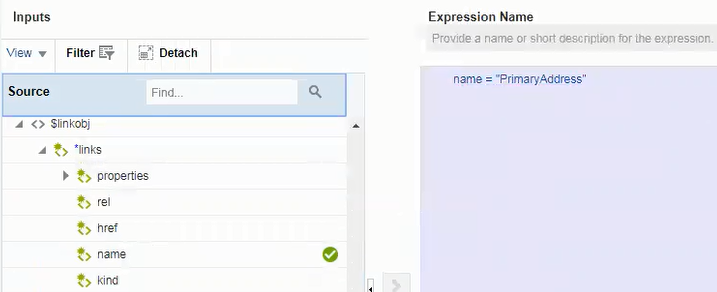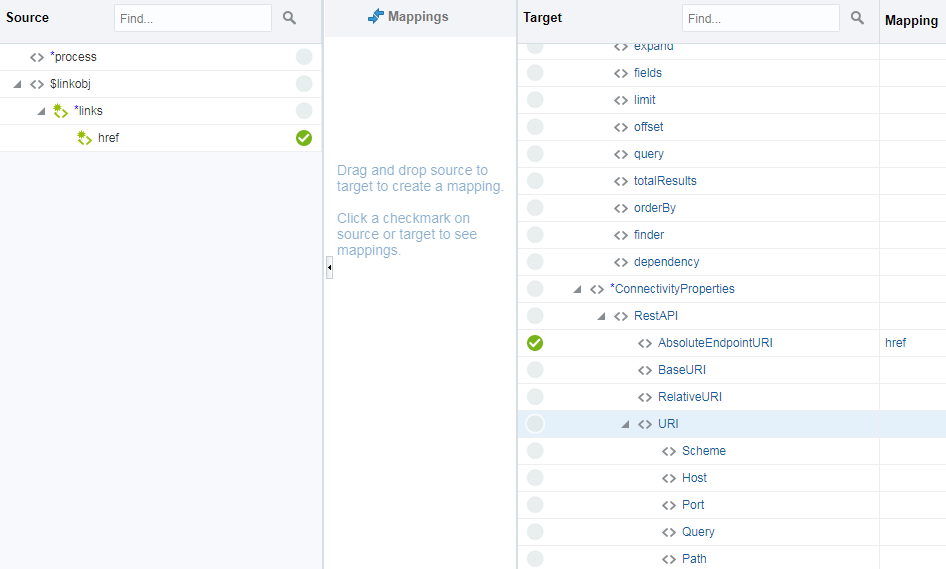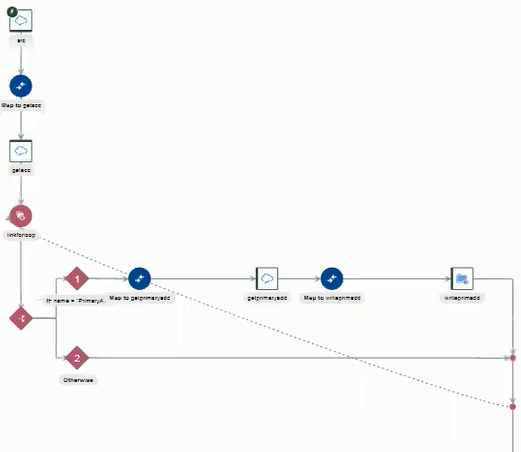Invoke an Endpoint Dynamically
You can dynamically invoke a REST endpoint/URL at runtime without configuring additional invoke connection or REST outbound details. As long as the Oracle HCM Cloud REST APIs return a response with HATEOS links, you can use this feature by mapping the HATEOS link to the invoke connection. This feature is useful in situations that require invoking a REST endpoint dynamically or when the endpoint is not known at design time. This feature is also useful in situations that require invoking multiple REST services, all of which accept the same input payload and return the same response payload as configured for the outbound endpoint. For these cases, this feature eliminates the need to create multiple connections to invoke each REST endpoint.
Note:
Note the following restrictions.
-
The request and response schema must be the same as provided during endpoint configuration.
-
Template parameters are not supported while mapping these properties.
-
The HTTP verb cannot be changed for the endpoint URL. For example, if the endpoint is configured to use POST, the outgoing request uses POST even if the endpoint URI changes at runtime.
-
Because the endpoint URL is determined at runtime, there is no facility to test whether the security credentials provided during connection configuration also work with the new endpoint URL. If you think the endpoint URL determined at runtime requires a different authorization header then the original URL, you may need to provide a mapping for the authorization standard header.
-
An initial invoke is configured to get the Account object by using the REST API. The response of this REST API does not provide the child objects. Instead, there are HATEOS links to the child objects (that is, the Primary Address object).
-
A second invoke uses the HATEOS links from the earlier response to make another invoke connection to the REST endpoint to fetch the child Primary Address object using dynamic REST endpoint support.
To change the endpoint configuration at runtime, you map one or more of the various properties under the ConnectivityProperties target element.





